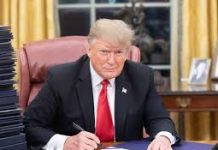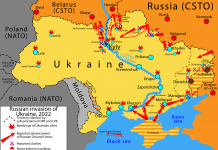
The Pentagon is set to enhance its military presence on the Korean Peninsula by deploying 28,500 troops in 2025, marking a significant increase in its commitment to counter regional threats. This decision, formalized through President Joe Biden’s approval of the annual defense policy bill, underscores Washington’s firm determination to protect South Korea through extended deterrence, which may include nuclear options.
The move comes amid growing concerns about former President Donald Trump’s potential approach to military strategy, particularly his history of advocating for reduced U.S. troop deployments and joint military exercises. His potential push to scale back U.S. forces and drills could strain the long-standing alliance with Seoul, prompting the Pentagon to act quickly to solidify its defense posture before Trump’s January 2025 inauguration.
The 2025 deployment is aimed at deterring rising threats, especially from North Korea’s expanding nuclear and missile programs, which have escalated tensions in the region. By committing significant military resources and reinforcing the nuclear umbrella, the U.S. is not only reaffirming its commitment to South Korea but also sending a clear message to adversaries.
In response to the increasing volatility in the Indo-Pacific, the Pentagon is sending a strong signal of resolve. The message is clear: any aggression against South Korea will be met with overwhelming U.S. force, utilizing both conventional and strategic military assets.
South Korea’s Yonhap news agency reported that U.S. and South Korean forces will also continue high-profile joint military drills on South Korean soil. These exercises, which simulate real combat scenarios, are designed to test readiness and showcase the alliance’s operational capabilities, particularly in light of North Korea’s growing military activity.
The drills include integrated air-to-ground operations, maritime patrols, missile defense systems like THAAD, and coordinated cyber warfare. The participation of advanced assets such as American F-35 fighters and B-1B bombers, alongside South Korea’s K2 Black Panther tanks, highlights the alliance’s technological superiority. These exercises not only demonstrate the interoperability of U.S. and South Korean forces but also reinforce the message that the U.S.-ROK alliance remains unwavering. They serve as a direct warning to North Korea that any provocation will be met with a swift and overwhelming response.
As North Korea continues its missile tests and escalates its rhetoric, these joint drills ensure both nations are prepared for potential large-scale military confrontations or cyberattacks that could target South Korea’s critical infrastructure. The exercises also emphasize the alliance’s readiness to face any threat, showcasing military advancements and the integration of cutting-edge technologies like hypersonic missiles and Aegis destroyers.
South Korea remains under constant threat, particularly from North Korea’s advancing missile and nuclear programs. Pyongyang’s missile tests have demonstrated greater range and accuracy, further solidifying its status as a direct threat to South Korea and regional stability. In addition to the missile threat, North Korea’s unpredictable leadership and aggressive rhetoric contribute to a volatile security environment. The increase in cyberattacks targeting South Korea’s government and private sector further complicates the threat landscape.
Other factors, such as potential asymmetric warfare tactics, including chemical or biological attacks and maritime provocations, add additional layers of complexity to South Korea’s defense strategy. Moreover, the regional power dynamics, including China’s growing influence and Russia’s increasing military presence in the Pacific, create additional uncertainty, potentially emboldening North Korea or destabilizing the region further.
Domestically, South Korea faces challenges in balancing defense spending, modernizing its military, and maintaining public support for its security strategies. As it navigates these challenges, South Korea must integrate cutting-edge technology, maintain strong alliances, and adapt its strategies to effectively address the evolving spectrum of threats.




